ABSTRACT
BACKGROUND AND AIM
One of the most intractable clinical problems clinicians face is chronic musculoskeletal pain. The study aimed to determine the prevalence, nature, and treatment of chronic non-specific musculoskeletal regional pain among household females.
METHODOLOGY
In a descriptive cross-sectional study, 1100 participants aged 30-45 years were interviewed. Purposive sampling technique and Face to face interview method were integrated for data collection. The respondents were females who suffered from musculoskeletal pain >6 months and experienced pain many times during the last month. Participants who suffered from musculoskeletal pain associated with malignancy or systemic pathologies were excluded from the study. A structured questionnaire was designed that included a Modified SF-36 scale to determine the quality of life and a visual analogue scale to measure pain intensity.
RESULTS
Prevalence of chronic Knee pain was 34.5%, low Back 31.4%, neck 20.4%, and shoulder pain was13.7%. The intensity of back pain was (2.94±.43), knee (3.01±.54), neck (2.62±.58), and shoulder pain (2.76±.57). Only 21% of females were on prescribed treatment by Pain management specialists, and the rest were relayed on non-prescribed remedies.
CONCLUSION
Musculoskeletal Chronic pain of moderate to severe intensity was more prevalent in the knee joint among household females. Both back and knee pain seriously affect the quality of their physical and social life.
KEYWORDS: knee, low back, neck, shoulder, pain, quality of life.
Ayesha Basharat
Lecturer
Department Allied Health Sciences
University of Sargodha
ORCID ID: 0000-0003-3086-7206
Muhammad Mustafa Qamar
Assistant Professor
Department Allied Health Sciences
University of Sargodha
ORCID ID: 0000-0002-3944-0084
Hafiza Salika Nasir
Physiotherapist
physical therapy department
DHQ hospital Gujranwala
ORCID ID: 0000-0002-1164-4739
Kashaf Faraz
Physiotherapist
Department of allied health sciences
University of Lahore
ORCID ID: 0000-0001-5687-4290
[Basharat A, Qamar MM, Nasir HS, et al. Prevalence Of Chronic Non-Specific Musculoskeletal Pain In Household Females, And Its Impact On Their Quality Of Life.
Pak.j.rehabil. 2022; 11(1): 47-54]
DOI: 10.36283/pjr.zu.11.1/007
INTRODUCTION
Work-related musculoskeletal disorders (WRMDs), also called non-specific pain disorders, or repetitive trauma syndromes, causes hindrance to physical activities1. Pain is called “non-specific origin” because it usually occurred without any known cause 2. Females are considered to suffer from such repetitive traumas more than males, as they played a vital role in fulfilling personal and social responsibilities 3. In most households, men do not share much of the housework, and women are more responsible than men, and this workload is burdened in work-related injuries to different body musculoskeletal regions of the body 4. Work-related musculoskeletal disorders are a group of painful disorders of the body’s soft tissues and were due to the repetition of different physical activities up to fatigue levels. These traumas usually heal after rest, but those who used to perform activities beyond their fatigue level cannot heal their micro-traumas even after rest5,6. Evidence suggested that disturbed biomechanics during various daily activities and prolonged postures are another cause of physical damage to the body7. Pain in such cases might be mild to severe in intensity, sharp or diffuse in quality, acute or chronic in nature. Chronic musculoskeletal is affect not only physical health but also upshot psychological and social wellbeing 8.
The prevalence of overwork induced pain was common in age 18-65 years, higher among women 39.92% than men 31.17%, and increased with age 9. Musculoskeletal chronic pain was divided into different regions: upper body, trunk, and lower body 6, and most communal complaints were head, neck, shoulder, low back, and knee pain 10. Management guidelines endorse identifying the rare cases of chronic musculoskeletal pain caused by medically serious pathology that requires diagnostic workup or specialist referral. As most non-specific pain does not have a known pathoanatomical cause, treatment focuses on reducing pain and its consequences 11. The treatment options include Pharmacological treatment using NSAIDs, opioid analgesics, intra-articular injections12, Surgical treatment13, and regenerative therapy14. Physical therapy is now getting attention in conservative management of different pain of mechanical origin 15,16.
Previous surveys in European and Asian’s countries focused on care, conditions, and treatments of chronic musculoskeletal pain providing limited data on prevalence and health complications of these pain. A study was conducted to rule out whether this household work caused chronic musculoskeletal pain in different body regions at the specific age group, sought to explore the intensity of pain and to what extent it affects their quality of life.
METHODOLOGY
A cross-sectional survey was conducted to explore the prevalence, severity, treatment, and impact of chronic pain on quality of life. A collaboration between the general population and physical therapist was established during an interview to shed light on different musculoskeletal pain aspects. The target population was household females with a sample size of 1100, and data was collected from participants using the purposive sampling technique. The calculated sample size using the z-score method of sample calculation was 1067. The questionnaire was divided into three parts; the first part consisted of demographic data, including some key questions to fill inclusion as age (30 to 45) years, duration of pain >6 months. Participants’ exclusion was based on the patient’s musculoskeletal pain associated with malignancy or systemic pathologies.
The quality of pain was also asked whether its continuous or intermittent. The second part of the questionnaire consisted of the Visual Analogue Scale (0=no pain, 10=worst unbearable pain imaginable) measured pain intensity and an internationally accepted scale17. Another advantage of this scale is that patients’ options are not limited to a few verbal descriptors or numbers. Also, it had an advantage over other scales, as it elucidates the intensity of pain in facial expressions up to the ease of illiterate participants. The third portion contained a Modified SF-36 questionnaire comprising physical, social, and mental health-related questions. Each question helped to determine the limitations of activities numerically with a total score of 47. Obtained higher scores depicted good health while lower scores showed deterioration of general health status. Informed consent was obtained from all females after clarifying the whole research procedure.
Data was compiled via SPSS (statistical package for the social sciences) version 21, descriptive statics was applied to analyzed data, and presented in table and graphs.
Ethical concerns: Whole research procedure was carried out with honesty and truthfulness. Data was collected, analyzed and interpreted by maintaining the confidentiality of patient’s data. The study was carried after the approval of the ethical review committee of Sargodha Medical College, University of Sargodha
RESULTS
The mean age of participants was 39±2. This study reported a prevalence of chronic knee pain highest in household females, but pain intensity was high in the low back region. Pain specialists currently treated only 21% females, 64 were taking non prescribed remedies (out of which 26% found to use NSAIDs and muscle relaxants, 60 % preferred to take Panadol along with heating of the affected area, 14 % used muscle relaxant with the heat on effected area), 15% favoured massage with olive oil, and herbal balm. According to an estimate, almost 79% had inadequate management of their pain.
Fig I: prevalence of non-specific pain in different regions in household females
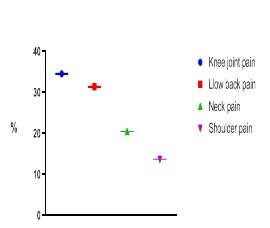
Table I: Intensity of chronic pain in the neck, shoulder, back, and knee in household females
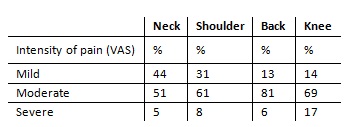
Fig II: Duration of chronic non-specific pain in household females
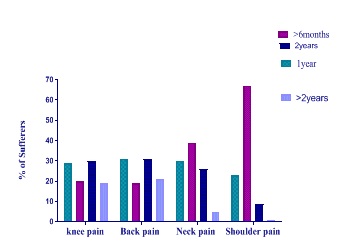
Fig III: Quality of pain in household females
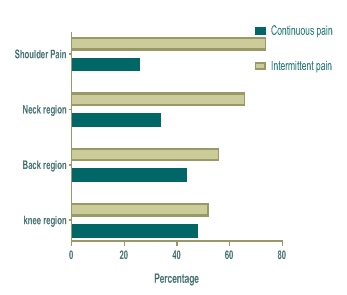
Fig IV: SF-36 score in different regions in household females
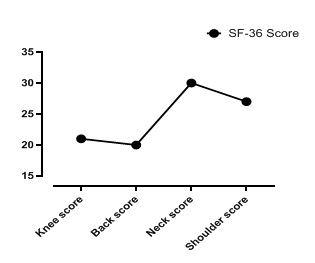
Outcome measures: Prevalence, intensity, and quality of non-specific chronic neck, shoulder, low back and knee pain. Quality of life affected by chronic pain.
DISCUSSION
Nevertheless, our understanding of the epidemiology of chronic pain remains limited, as several studies about the prevalence of chronic pain have been based on patient’s data attending pain clinics, which may represent the extreme of the population with chronic pain and not likely to present the general population. The current study ruled out the prevalence of pain in the general population of females.
Current literature provided deep insight into the proportion of the population affected by chronic pain and its impact on general health status when left untreated. The study also helped clinicians to consider pain and associated complications more precisely and provided awareness among females to ponder chronic musculoskeletal pain a serious medical condition, and seek treatment timely to prevent adverse effects on health.
Non-specific pain affects people of all ages; however, the prevalence of chronic idiopathic pain was high among adolescent9, young adults18, and degenerative pain common in old age19. It is reconnoitered that chronic skeletal pain in old age was higher in the knee region, reducing their functional capacity and increased morbidity with increased age20. This was held in a systematic review that reported a higher incidence of knee osteoarthritis in the elderly, more in females 21. According to the literature, knee joint osteoarthritis befell after 40 to 50 years, and greater in developed than developing countries considered a major source of disability in older adults22. Current study results were synchronous with previous data as the high prevalence of chronic knee pain compromises their household chores. But the contrast was also found when compared with affected age, as all previous data disclosed that chronic pain mostly affects the older adults almost after the age of 50 or above, but in Pakistan, chronic knee pain was seen in young adults with a peak age of 39 years showed early sign of ageing in this region.
Low Back Pain is a global problem that has been associated with disability for years. More than 80% of the population will report an episode of LBP at some point during their life, and 15% to 20% of adults experienced low back pain once in a year23. Low back pain ranked highest in terms of disability of daily livings and ranked 6th in terms of overall health burden. With increasing age, both prevalence and burden increases24. Mostly affect the woman, and majority of them suffered from moderate to severe intensity chronic low back pain25. Overall prevalence of low back pain was quite high in previous studies, but contrast was seen in the current where knee pain occurrence was more than any other body regions. But outcomes are the same in the perspective of quality and complications of low back pain, as most respondents were suffering from continuous moderate to severe intensity of chronic low back pain, which caused functional limitations and disability in females. Although the number of low back pain patients was lower than knee pain, the quality of life was equally compromised in both patients suffering from knee or back pain. Prevalence of musculoskeletal pain, including neck in medical students, was estimated as one-fourth of medical student’s suffered from muscles and skeletal problems, out of which Neck pain was described 45%26. Shoulder pain is most common in all musculoskeletal complaints in the young population before 30 years27. In primary care settings, shoulder pain incidence was 15/1000 patients annually, and the pain was idiopathic most of the time28. Shoulder and neck pain showed low prevalence when compared with previous researches, especially in young adults. Though most females’ pain quality was mild, it still affected their work performance, cut down the work, and took extra time to accomplish their daily tasks.
Compared to previous information about proper treatment regimen of chronic non-specific pain used in developed countries11,12,13,14,15 low number of participants used prescribed treatment reflecting differences in local traditions, economic background, and awareness about mechanical musculoskeletal pain its complications. The clinical course of mechanical pain is often favorable; thus, many patients require little formal medical care and recover soon if they consult early for proper pain treatment, but most of them ignored their pain, resulting in reduced functional capacity.
CONCLUSION
Chronic non-specific pain was common in all musculoskeletal regions among young females, but the pain was most prevalent in the knee region. The intensity of pain in the low back and knee region was moderate to severe, seriously affecting their social and working life quality. The low to moderate intensity pain knockout the neck and shoulder region and interfere with their functional capacity. Medical specialists managed a limited number of patients, and more than half of sufferers received inadequate treatment due to unawareness about health complication of chronic pain. It was documented that chronic pain is a major health problem that needs to be taken more seriously.
ACKNOWLEDGMENT
Special thanks to all faculty of the Department of Allied Health Sciences, Sargodha medical college (UOS), for completing this study.
REFERENCES
- Blyth FM, Briggs AM, Schneider CH, Hoy DG, March LM. The global burden of musculoskeletal pain—where to from here? American journal of public health. 2019;109(1):35-40.
- Rizvi J, Zehra N, Masood H. Effectiveness of lumbar stabilization exercises in non-specific low back pain among occupational therapists. Pakistan Journal of Rehabilitation. 2019;8(1):43-8.
- Starmer AJ, Frintner MP, Matos K, Somberg C, Freed G, Byrne BJ. Gender discrepancies related to pediatrician work-life balance and household responsibilities. Pediatrics. 2019;144(4): 331-38.
- Horne RM, Johnson MD, Galambos NL, Krahn HJ. Time, money, or gender? Predictors of the division of household labour across life stages. Sex Roles. 2018;78(11):731-43.
- Iqbal ZA, Alghadir AH. Cumulative trauma disorders: A review. Journal of back and musculoskeletal rehabilitation. 2017;30(4):663-6.
- Hasan A, Kazmi SA. Effect of core stability exercises versus myofascial release technique combined with core stability exercises in the management of low back pain. Pakistan Journal of Rehabilitation. 2020;9(2):24-9.
- Umar A, Kashif M, Zahid N, Sohail R, Arsh A, Raqib A, et al. The prevalence of musculoskeletal disorders and work-station evaluation in bank employees. Physikalische Medizin, Rehabilitationsmedizin, Kurortmedizin. 2019;29(02):99-103.
- Nasonov E, Yakhno N, Karateev A, Alekseeva L, Barinov A, Barulin A, et al. General principles of treatment for musculoskeletal pain: Interdisciplinary consensus. Rheumatology Science and Practice. 2016;54(3):247-65.
- Chen B, Li L, Donovan C, Gao Y, Ali G, Jiang Y, et al. prevalence and characteristics of chronic body pain in China: a national study. Springerplus. 2016;5(1):1-6.
- Rathore FA, Attique R, Asmaa Y. Prevalence and perceptions of musculoskeletal disorders among hospital nurses in Pakistan: A cross-sectional survey. Cureus. 2017;9(1): 21-27.
- Oliveira CB, Maher CG, Pinto RZ, Traeger AC, Lin CW, Chenot JF, van Tulder M, Koes BW. Clinical practice guidelines for the management of non-specific low back pain in primary care: an updated overview. European Spine Journal. 2018 Nov;27(11):2791-803.
- Martinez-Calderon J, Flores-Cortes M, Morales-Asencio JM, Luque-Suarez A. Pain-related fear, pain intensity and function in individuals with chronic musculoskeletal pain: a systematic review and meta-analysis. The journal of pain. 2019 Dec 1;20(12):1394-415.
- Hubbard MJ, Hildebrand BA, Battafarano MM, Battafarano DF. Common soft tissue musculoskeletal pain disorders. Primary Care: Clinics in Office Practice. 2018;45(2):289-303.
- Zhang W, Ouyang H, Dass CR, Xu J. Current research on pharmacologic and regenerative therapies for osteoarthritis. Bone research. 2016;4(1):1-14.
- Shipton EA. Physical therapy approaches in the treatment of low back pain. Pain and therapy. 2018;7(2):127-37.
- Chimenti RL, Frey-Law LA, Sluka KA. A mechanism-based approach to physical therapist management of pain. Physical therapy. 2018;98(5):302-14.
- Le May S, Ballard A, Khadra C, Gouin S, Plint AC, Villeneuve E, et al. Comparison of the psychometric properties of 3 pain scales used in the pediatric emergency department: Visual Analogue Scale, Faces Pain Scale-Revised, and Colour Analogue Scale. Pain. 2018;159(8):1508-17.
- Ijaz M, Ahmad SR, Akram M, Khan WU, Yasin NA, Nadeem FA. Quantitative and qualitative assessment of musculoskeletal disorders and socioeconomic issues of workers of brick industry in Pakistan. International Journal of Industrial Ergonomics. 2020;76(21):102933-38.
- Park J-H, Hong J-Y, Han K, Suh S-W, Park S-Y, Yang J-H, et al. prevalence of symptomatic hip, knee, and spine osteoarthritis nationwide health survey analysis of an elderly Korean population. Medicine. 2017;96(12): 1024-31.
- Showery JE, Kusnezov NA, Dunn JC, Bader JO, Belmont Jr PJ, Waterman BR. The rising incidence of degenerative and posttraumatic osteoarthritis of the knee in the United States military. The Journal of arthroplasty. 2016;31(10):2108-21014.
- Smith BE, Selfe J, Thacker D, Hendrick P, Bateman M, Moffatt F, et al. Incidence and prevalence of patellofemoral pain: a systematic review and meta-analysis. PloS one. 2018;13(1):e0190892-e0190899.
- Farrokhi S, Chen Y-F, Piva SR, Fitzgerald GK, Jeong J-H, Kwoh CK. The influence of knee pain location on symptoms, functional status and knee-related quality of life in older adults with chronic knee pain: Data from the Osteoarthritis Initiative. The Clinical journal of pain. 2016;32(6):463-75.
- Fatoye F, Gebrye T, Odeyemi I. Real-world incidence and prevalence of low back pain using routinely collected data. Rheumatology international. 2019;39(4):619-26.
- Ludwig C, Luthy C, Allaz A-F, Herrmann F, Cedraschi C. The impact of low back pain on health-related quality of life in old age: results from a survey of a large sample of Swiss elders living in the community. European Spine Journal. 2018;27(5):1157-65.
- Wang YXJ, Wang J-Q, Kaplar Z. Increased low back pain prevalence in females than in males after menopause age: evidences based on synthetic literature review. Quantitative imaging in medicine and surgery. 2016;6(2):199-105.
- Dighriri YH, Akkur MA, Alharbi SA, Madkhali NA, Matabi KI, Mahfouz MS. Prevalence and associated factors of neck, shoulder, and low-back pains among medical students at Jazan University, Saudi Arabia: A cross-sectional study. Journal of family medicine and primary care. 2019;8(12):3826-34.
- de Oliveira VM, Pitangui AC, Gomes MR, da Silva HA, Dos Passos MH, de Araújo RC. Shoulder pain in adolescent athletes: prevalence, associated factors and its influence on upper limb function. Brazilian journal of physical therapy. 2017;21(2):107-13.
- Cadogan A, Mohammed KD. Shoulder pain in primary care: frozen shoulder. Journal of primary health care. 2016;8(1):44-51.
